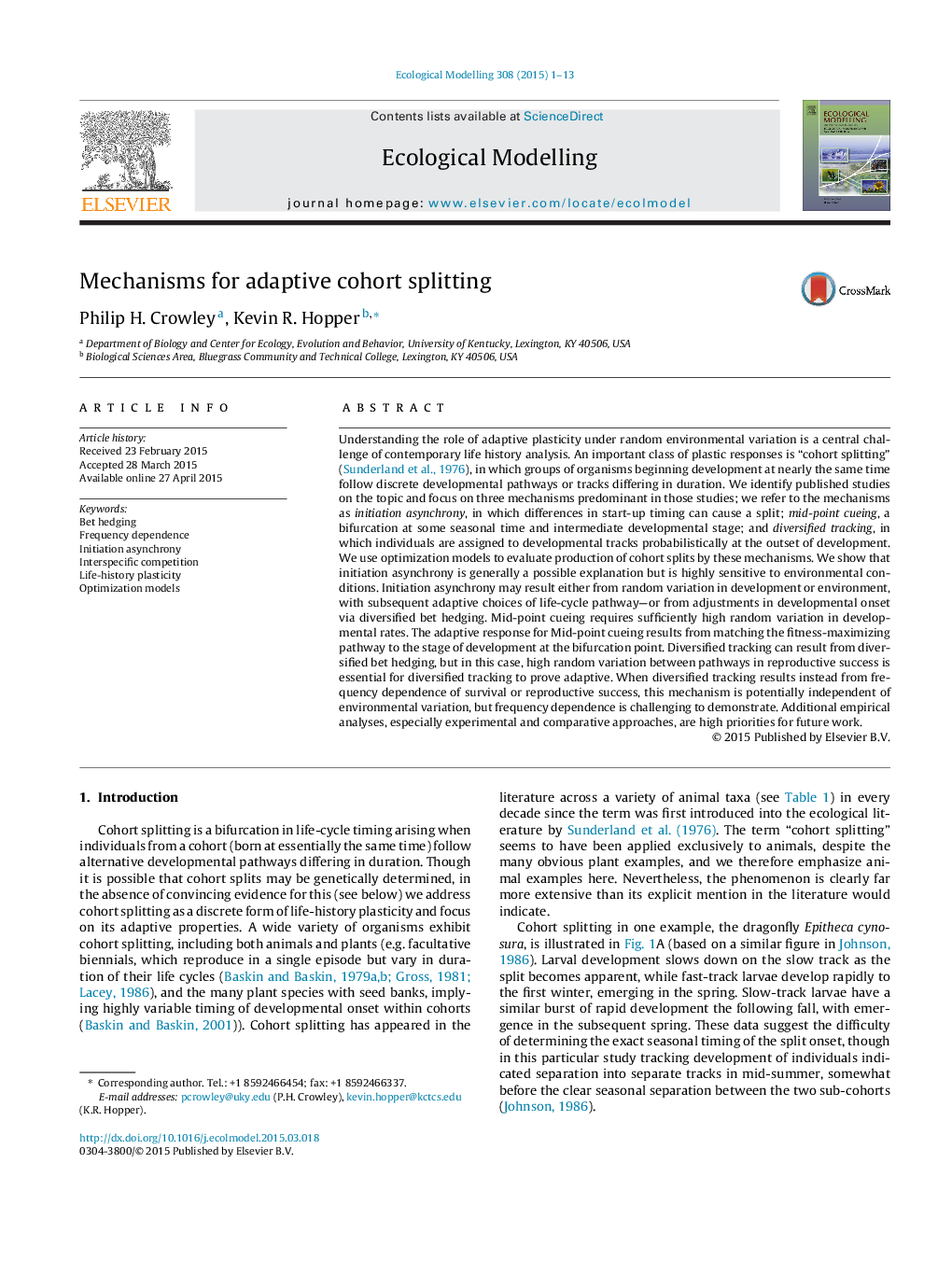| کد مقاله | کد نشریه | سال انتشار | مقاله انگلیسی | نسخه تمام متن |
|---|---|---|---|---|
| 4375689 | 1617438 | 2015 | 13 صفحه PDF | دانلود رایگان |
• We model the life history phenomenon of cohorts splitting into discrete sub-cohorts.
• We reveal three primary mechanisms and explore how each can cause a split.
• Differences in start-up timing can cause a split (initiation asynchrony).
• There may be a critical seasonal time and developmental stage to initiate a split (mid-point cueing).
• Individuals may join sub-cohorts probabilistically at the outset (diversified tracking).
Understanding the role of adaptive plasticity under random environmental variation is a central challenge of contemporary life history analysis. An important class of plastic responses is “cohort splitting” (Sunderland et al., 1976), in which groups of organisms beginning development at nearly the same time follow discrete developmental pathways or tracks differing in duration. We identify published studies on the topic and focus on three mechanisms predominant in those studies; we refer to the mechanisms as initiation asynchrony, in which differences in start-up timing can cause a split; mid-point cueing, a bifurcation at some seasonal time and intermediate developmental stage; and diversified tracking, in which individuals are assigned to developmental tracks probabilistically at the outset of development. We use optimization models to evaluate production of cohort splits by these mechanisms. We show that initiation asynchrony is generally a possible explanation but is highly sensitive to environmental conditions. Initiation asynchrony may result either from random variation in development or environment, with subsequent adaptive choices of life-cycle pathway—or from adjustments in developmental onset via diversified bet hedging. Mid-point cueing requires sufficiently high random variation in developmental rates. The adaptive response for Mid-point cueing results from matching the fitness-maximizing pathway to the stage of development at the bifurcation point. Diversified tracking can result from diversified bet hedging, but in this case, high random variation between pathways in reproductive success is essential for diversified tracking to prove adaptive. When diversified tracking results instead from frequency dependence of survival or reproductive success, this mechanism is potentially independent of environmental variation, but frequency dependence is challenging to demonstrate. Additional empirical analyses, especially experimental and comparative approaches, are high priorities for future work.
Journal: Ecological Modelling - Volume 308, 24 July 2015, Pages 1–13
